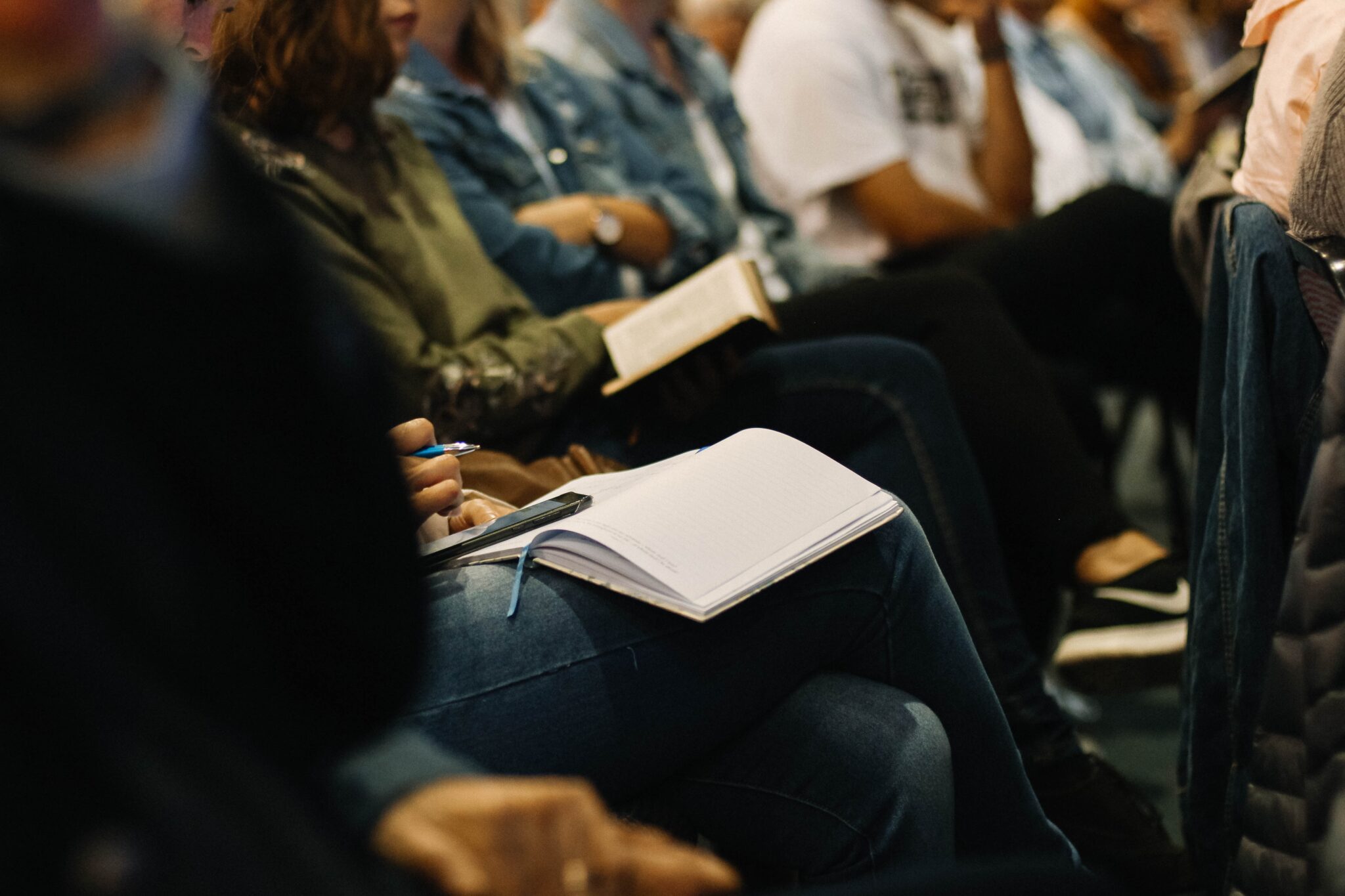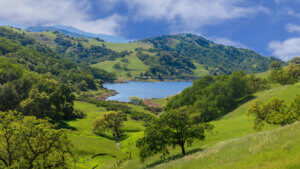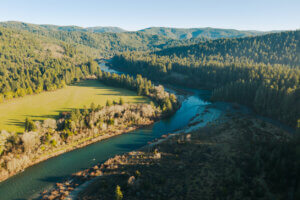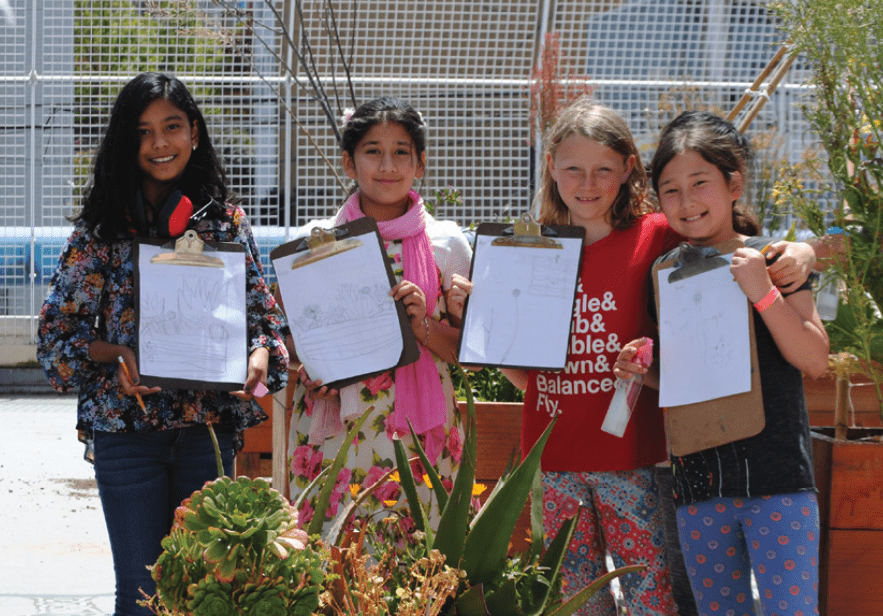Water is a vital natural resource that shapes the development of California’s environmental, social, and economic landscape. Despite this, the essential workers that maintain California’s water supply are often overlooked.
Tiffany Baca is the Public Affairs Manager at the Municipal Water District of Orange County (MWDOC), an agency that provides more than 3.2 million Orange County residents with water-saving resources, water-centric education, sustainability programs, and clean drinking water. Environmental education is deeply tied to her work, especially as a member of CAELI’s leadership council. In this Q&A, Tiffany shares the importance of uplifting environmental literacy and providing career technical education programs for students, especially as a wave of lifelong water industry workers are set to retire in just a few years.
Environmental literacy is critical to creating an informed generation that considers their relationship to the natural world. For nearly five decades, MWDOC has been providing water-focused environmental education to Orange County children and adults alike, and offering an introduction to career pathways in the water and energy sectors so that students can envision a future that includes protecting and sustaining California’s essential water supply.
Please describe the work and mission of the Municipal Water District of Orange County (MWDOC). How does your work as the Public Affairs Manager support that mission?

The Municipal Water District of Orange County is a wholesale water provider and resource planning agency who serves the county through 28 retail water agencies. MWDOC was formed in 1951, bringing together a coalition of water providers who had the shared agenda of supplying safe, healthy, and clean water to Orange County residents and businesses at an equitable cost. We’re also one of 26 Metropolitan Water District of Southern California’s member agencies that deliver water, fundamental water education and programming, conservation outreach, and advocacy on behalf of the entire region.
The District also offers rebate programs, and has a board of directors and government affairs associates who provide unwavering advocacy on behalf of our service area. We’ve got a lot of hardworking, dedicated people who are on the task of making sure that we’re providing clean, safe, reliable water for everybody.
My job as a public affairs manager is to make sure that we educate the public on the scope of what we do, and our impact within the Orange County community. I manage a team of six communications professionals, and we’re able to accomplish our goals as well as the District’s goals through meetings, forums, outreach and education programs, social media, video content, and our website. So we’re really the outreach and education team.
Why is it so important to responsibly manage water use in California?
About 50 percent of the water Orange County uses is imported from the Colorado River, which is 242 miles away, or from the lakes and rivers in northern California via the State Water Project, which is more than 700 miles away. We have limited groundwater, surface water, and desalination in a couple of different regions. So we have to make sure that we are really taking care of our water resources, and building a diverse water supply portfolio.
Orange County does an amazing job at conserving and reusing water. Through our water saving programs and incentives, we save about 17 billion gallons of water each year.
Can you describe the approach you’ve taken at MWDOC to water and energy education, especially as the leader of the Water Energy Education Alliance (WEEA)?
MWDOC has had a choice school program where we’ve been educating K–12 students about the value of water for almost five decades. Over the years, this program has expanded to reach Orange County students at multiple levels, including illuminating career pathways to water and energy. Our goal is to provide water education programs that prepare students to become thoughtful, informed decision makers, and also to showcase the plethora of good job opportunities that contribute to the welfare of workers, their families, and to the health of the state’s economy. That’s where WEEA comes in. This past May, MWDOC assumed leadership of WEEA, a Southern California alliance of water and energy industry, and education leaders working together to build and bolster Career Technical Education programs (CTE) for high school students. In the next 10 years, the water and energy industries are going to see a flood of retirements. We want to fill those positions with our next generation of thoughtful, informed leaders, and in order to do that, we need to create those opportunities and ensure that all California’s children know that they have a place with us. Water is an essential resource. It is everyone’s responsibility to save and protect it.
We are working now to incorporate environmental literacy into CTE education. It only makes sense. Environmental literacy taps into the engineering design process, and connects students to their local environment, guiding them to solve problems in their own communities that they can relate to and that they care about. We are no longer memorizing things to get by, but rather learning how to think critically, and to start questioning the bigger picture. Using this structure, the entire world opens up to students. They can see their impact on local issues, and can begin to make informed decisions for the health and prosperity of their communities. Those are the things I really appreciate about environmental literacy.
I think about my upbringing and the resources that I had as a kid. I was born and raised in Colorado so I had no shortage of outdoor experiences. I knew that this great big world was there, but it didn’t even cross my mind that this was our water supply, that this is our air. It took me a long time to realize that I have an impact on the resources around me. My role as a citizen is to understand this and make good decisions for my future and the future of others. And I think environmental literacy does that perfectly.
Check out this video on environmental literacy from Tiffany Baca and MWDOC. “We want problem solvers who are capable of resolving societal and environmental problems. Thats what we want ALL students to become so they become leading decision makers in their community and the society as a whole.” —Gerald Lieberman, Ph.D.
How have you shifted your environmental literacy efforts to continue offering educational opportunities during COVID?
COVID has turned our world upside down. MWDOC went through a budget process where we cut our budget five different times. To that point, WEEA is now funded at the bare minimum level by a handful of sponsors who also had their budgets cut to the bare minimum.
Everything has been a challenge. It took us five months to develop and implement an effective plan to transition our choice school programs and education initiatives to a virtual platform. We worked with Inside the Outdoors at the Orange County Department of Education to create free resources and activities for students and teachers to complement our virtual programs. These activities provide the hands-on learning experience that students are now missing because of the pandemic. We begin with a pre-activity like a home water audit so students understand where their tap water comes from and where it’s being allocated. Then, we have interactive presentations, and finally a post activity unique to each grade level. A couple of examples include building an aquifer using materials they have at home, or creating a public service announcement that teaches their friends, families, and peers the value of water and how to use it wisely. We also have a web of life activity focused on the Sacramento-San Joaquin Bay Delta ecosystem because that’s where a good portion of our water supply passes through. This activity challenges students to think deeply about how changes to an ecosystem hundreds of miles away, affects us here in Orange County.
What has significantly changed is that we’re now inviting students to do the query themselves, having teachers guide those questions and talking about their relationship to water. Through all of this, they become connected to their actual water supply, and I think that’s going to make all the difference.
This is an ongoing process. We have lots of things that we want to do. We’ve got big dreams but there’s only so much time in a day. This is where we’re starting.
What does the future of environmental literacy look like in your field, in schools, and beyond?
Water belongs in every subject. Water is an essential element to life. Because of the work done in environmental literacy, we are no longer constrained to science classes. Now we can teach water education freely in history, science, health, math, and even visual and performing arts classes. So the future, to me, includes more personal responsibility, which in turn will domino into more corporate responsibility, and more personal connection to the world around us, which is instrumental to our survival. Environmental literacy is essential. We cannot continue on this path without it. It’s just not sustainable.
Why do you work to help students move into water-focused careers?
There is a huge range of good, secure, well-paying jobs in all sectors of water. What could be more essential than a water worker? We have been a silent service for a variety of reasons. For decades, the mentality has been that as long as we’re doing our jobs, and there are no complaints, and the water is coming out of the tap, we’re doing great. But I think what’s been missing is the essentialness of it. Water not only affects our lives, but is a cause of it. We need to protect, value, and take care of our natural resources or there is no future.







